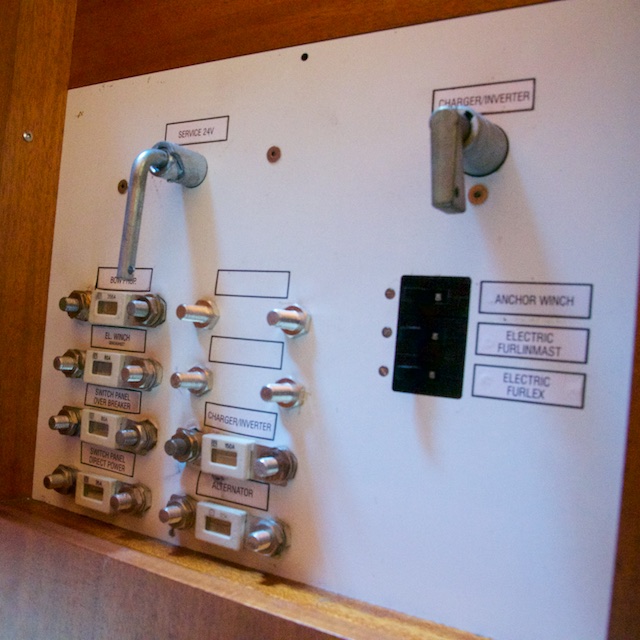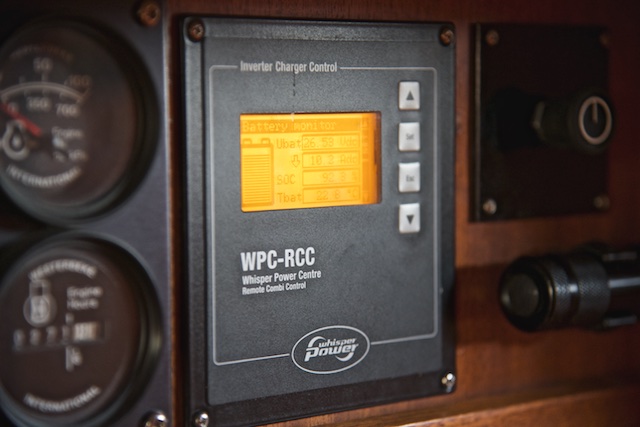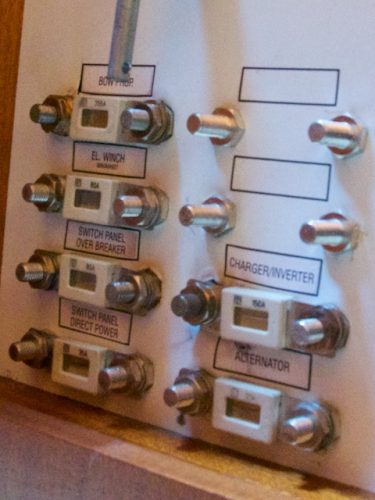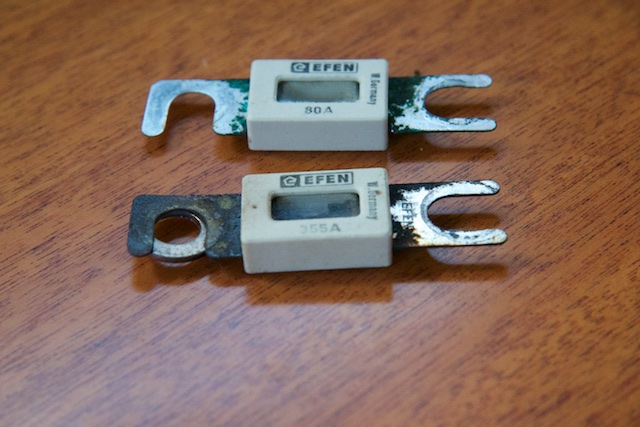The Large Fuses

When did you check your large fuses last time? They are often placed close to the batteries and are for the large 12V/24V consumers, such as the bow prop, the electric winches, the inverter or, in my case, also as a main fuse before it goes to the switchboard for the smaller consumers.

Before the power is lead to the switch board, it is first lead through an 80A large fuse on the large fuse board.
The issue with the main fuses is that there are loads of amps flowing. For the bow-prop, for instance, I have a 355A fuse to power my 24V 10 hp bow prop! After all, 8 kW of power needs to be lead to the bow propeller (N.B. No problem with AGM or LiFe batteries, by the way, since my battery bank is placed close to the bow prop under the floor before the forepeak. Thus, no separate battery for the bow prop is needed).
When loads of amps are flowing, the contact between the fuse and the bolts where it sits needs to be perfect. Therefore, the fuse should be connected with clean washers and the bolt needs to be tightened well.
If this is not the case, the voltage drop becomes considerable when using the item. Further, the bolt gets hot.
Please note that the voltage you read on your onboard voltage meter or power central is measuring directly on the batteries and not at the consumers themselves. Obviously, the voltage drop on the way from the batteries to the consumer should be minimal, hence this article.
Take a separate hand-held volt meter and place the black end on minus (found close to the main fuse board) and the the red end on one of the bolts. It should read the same as the onboard battery voltage, and close to the same under load. Then check the next bolt, which should read the same.

The volts showing on the onboard voltage meter might show good voltage, while the voltage at one of the bolts on the large fuse board might read considerably lower.

Check every bolt and make sure each one reads the same voltage as found on the battery. If not, one of the bolts might not be tightened enough and the contact surface is not good enough. Please note: There are similar bolts on the reverse side where the huge red cables are lead to.
Sometimes, however, the voltmeter measuring at one of the bolts measures less than the battery shows. This can be the result of poor connectivity between the bolts and the fuse (on either side of the fuse board, by the way, since there are similar bolts on the back side of the board). The larger the consumption, the higher the potential voltage drop and one needs to make sure there is good connectivity along the way from the batteries to the consumers and the large fuse board is one big risk factor where bad connectivity could be found.
There can be all sorts of “funny” results from voltage drop at the fuse board. One is obvious that the consumer gets too little power or the bolt gets hot. But the battery charger can also get “cheated” thinking the batteries are more full than they actually are if not enough power is going into the batteries (also via one of these large fuses).
Beware, there is huge current found at the large fuse board and you should be very careful not to do a short circuit between the negative (often found a distant away in order to prevent exactly this) and the positives which are visible here with the fuses.
You can also touch the individual bolts with your hand and feel if one of them feels hot. This is also a sign of poor connectivity. Instead of leading the power through the fuse and to the consumer, the bolt gets heated. It can become so hot that the board itself might get a sign of burn. This can eventually even catch fire on the boat!
Check all fuses visually. If they look doubtful, carefully unscrew the bolts and take off the fuse. If they look like below, there is no wonder that not enough power is lead through! You can clean the fuses and the washers with sandpaper, but, better yet, replace them with a new fuse.
Please note, of course all work at the fuse board must be made with the main switches off!

These fuses were replaced. On one of them, the washer even got “welded” onto the fuse due to the heat and/or oxidation.
If all bolts are tight and fuses are clean and voltage is the same over all bolts, every consumer have a good chance to receive full power at the right voltage.

